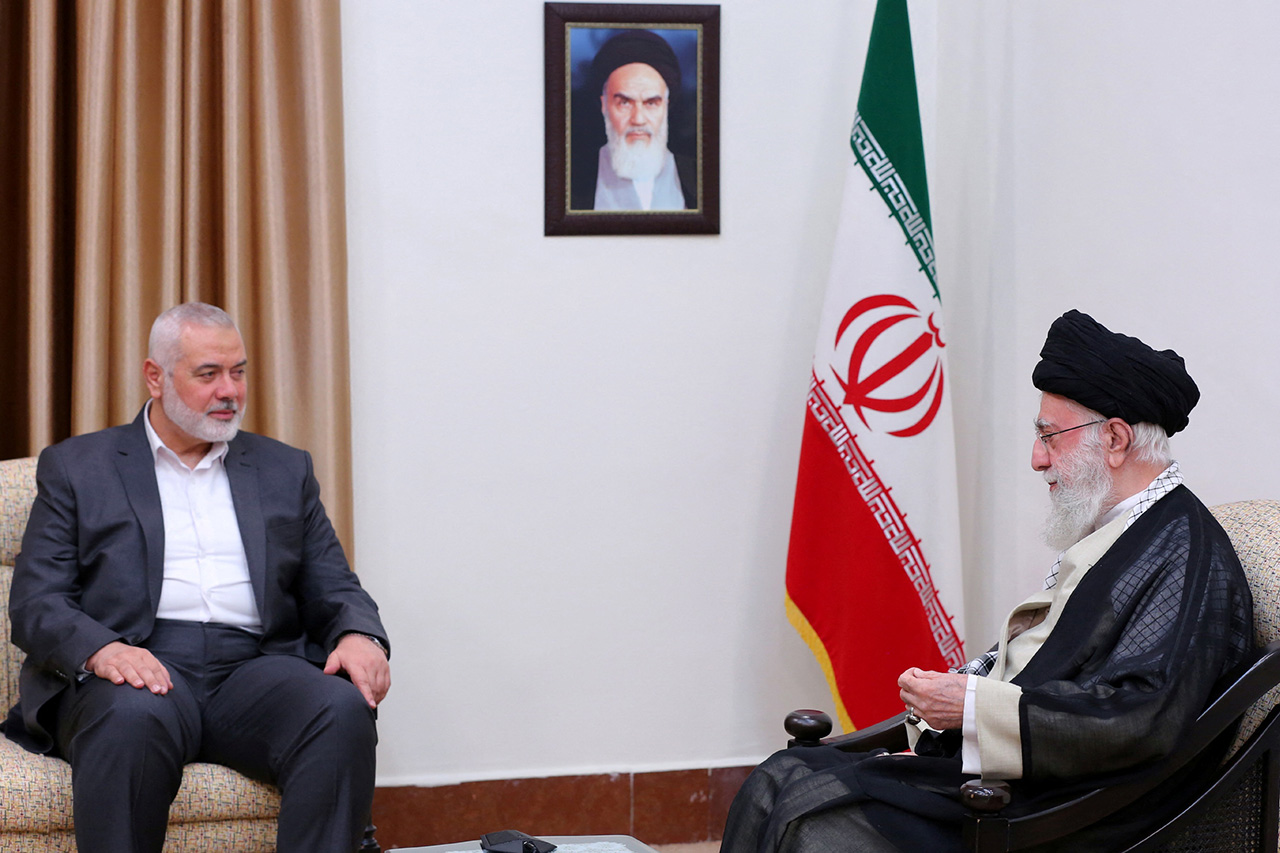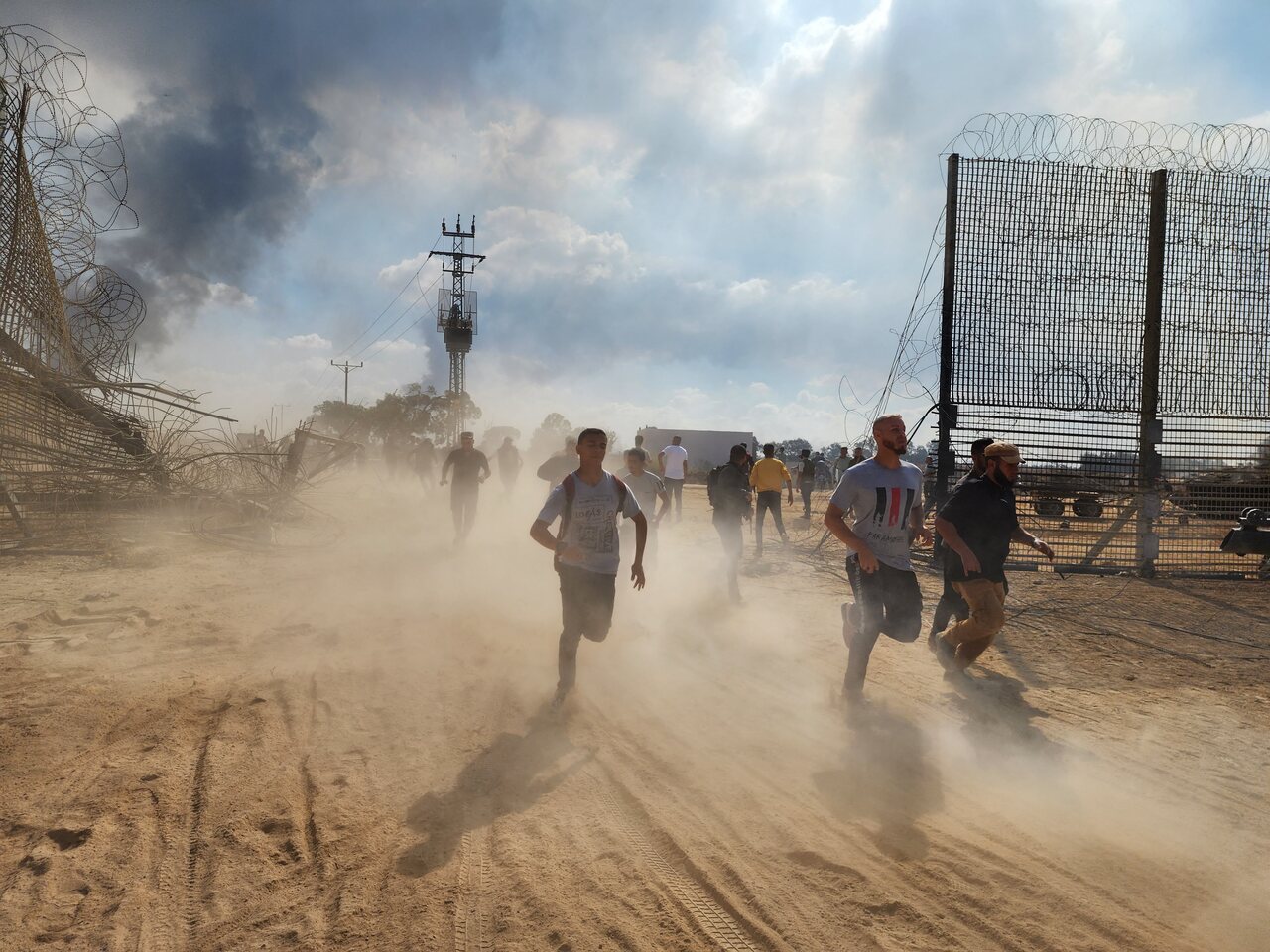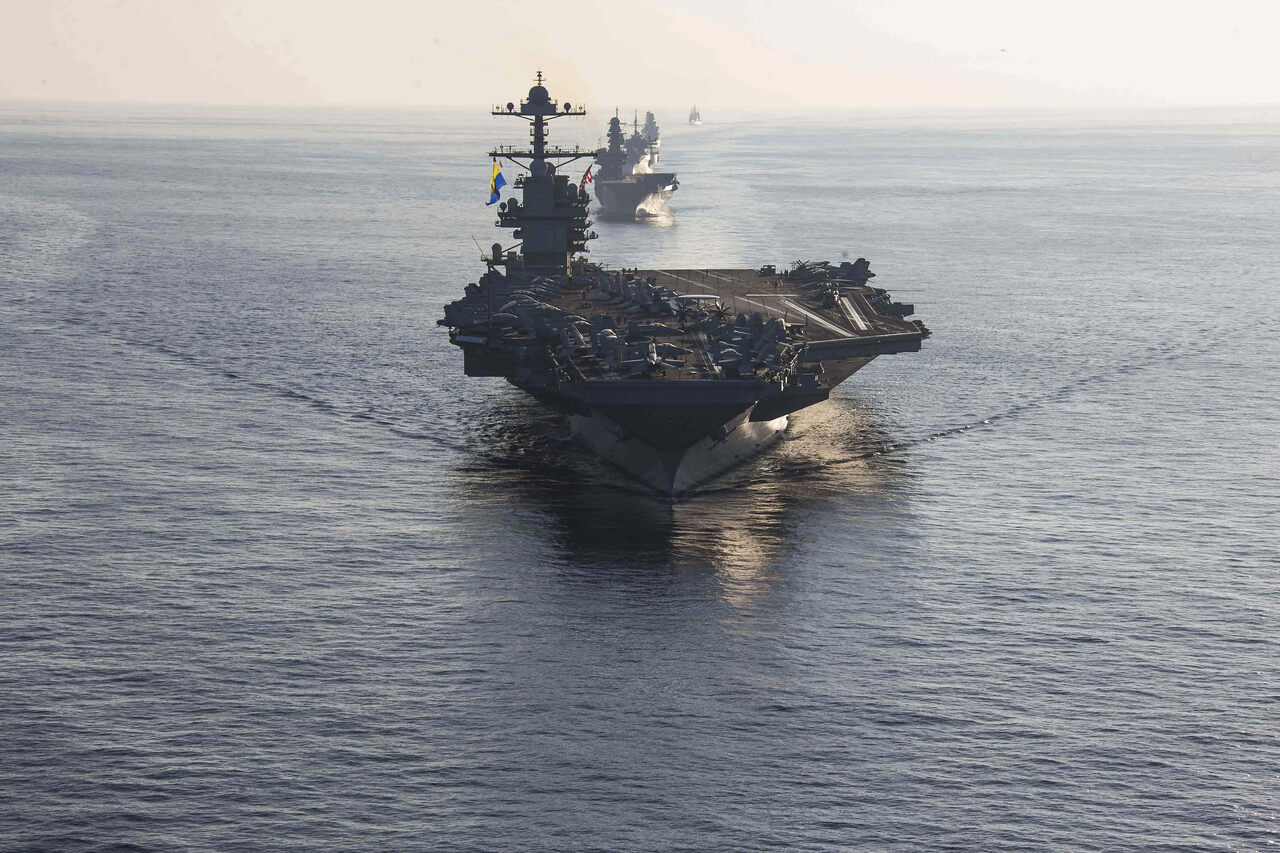Iran's Relations with Hezbollah and Hamas Evolving
Since the establishment of Shiite theocracy in 1979, Iran has been a leading sponsor of various Middle Eastern terrorist groups. Lebanese Hezbollah is currently the most important ally of Iran, securing its strategic interests in the Levant. Although Hamas and a few other Palestinian groups are under Iran’s influence, they are not controlled by its government. The Hamas terrorists attacks on Israel on 7-8 October and tensions on the Lebanese-Israeli border create a serious risk of more active and indirect Iranian support for extremists in the Gaza Strip, a scenario that Israel and the U.S. want to avoid or postpone.
 WANA NEWS AGENCY / Reuters / Forum
WANA NEWS AGENCY / Reuters / Forum
Two radical movements—Hezbollah and Hamas—play different roles in Iran’s foreign policy. The state’s approach to terrorism stems from a combination of motives: the idea of exporting the Islamic revolution, solidarity with other followers of Shia Islam, pan-Islamic slogans, strategic ambitions, and tactical goals. Iran’s relations with each movement is characterised by numerous changes and different degrees of partnership and dependence, going beyond simple perception or labelling as “proxy forces”. Iran is the main sponsor of Hamas, but only Hezbollah remains its strategic partner and a model for other, less-developed groups.
Iran and Hezbollah
The Lebanese Party of God (Hezbollah), currently led by Sheikh Hassan Nasrallah, is a key regional partner of Iran and a recipient of $700 million in annual subsidies from it. Hezbollah enjoys the recognition of Lebanon’s Shiites and is one of the main political parties in this divided country. Since its founding, it has had strong family ties with Shia clerics in Iran and Iraq, a common revolutionary vision with Iranians (the party’s founder Fadlallah), and organisational ties with the Islamic Revolution Guard Corps (IRGC). Iran considers Hezbollah its greatest success in building influence among Arabs, who are traditionally hostile to Persians and Shiism. Some of the Iranian elites also remain grateful to the Lebanese for sheltering them from Shah Reza Pahlavi’s repression. Revolutionary Iran reversed the Shah’s regional strategy, based on an alliance with Israel against Arab nationalists. Post-revolutionary Iran has for many years also been cultivating and promoting its image as the lead country in the growing “Axis of Resistance”, developed with Syria, numerous Shia militias, and Palestinian radicals.
But Hezbollah is also a terrorist group. In the 1980s, kidnappings of foreigners and suicide bombings of the U.S. embassy and troops in Beirut transformed its secret cells into a regional and global terrorist network. Its members (Unit 910) also assassinated many Lebanese politicians hostile to Syria and Iran. Additionally, over the past decade this network has resumed attacks on Israeli citizens and Jewish communities outside the Middle East, with some of these ordered by the IRGC in retaliation for Mossad operations in Iran.
Moreover, Hezbollah is now an experienced, disciplined, and motivated militia with many weapon systems comparable to the Army of Lebanon. There are 20,000-30,000 active members in the light infantry and special units. Their guerrilla-style and terrorist attacks forced the Israeli Defense Forces (IDF) to withdraw from southern Lebanon in 2000. Party propaganda also presents the short and intense war of 2006 as the “first victory of the Arab army” over Israel. Since then, Hezbollah has expanded its arsenal to 130,000-150,000 artillery rockets, a few hundred drones, and short-range ballistic and anti-ship cruise missiles. Its units also formed the core of “Shia International” volunteers defending the Syrian regime. After the death of IRGC Gen. Qasem Soleimani in a U.S. attack in 2020, Hezbollah’s decision-making autonomy towards Iran and its coordinating role in Syria may have even increased significantly.
Iran and Palestine
Fighting with Israel and sabotaging the regional peace process are constant elements of Iran’s strategy. Currently, the Iranian government claims that the common goal of the “Axis of Resistance” is the complete elimination of the State of Israel, declaring that it will be achieved by 2040. The dogmas of the revolution and the goals of Iran in Palestine are also expressed in the official name of the elite IRGC units—the Jerusalem Forces (al-Quds). However, Iran has shown great flexibility in selecting its Palestinian partners, too. Ayatollah Ruhollah Khomeini maintained good personal contacts with Yassir Arafat and financially supported his secular PLO. At the same time, in 1987, the IRGC initiated parallel and secret contacts with the terrorist Abu Nidal, who was attacking PLO leadership.
After the Oslo peace accords (1993-1995), Iran extended its assistance to other groups, rivals of Arafat and Abu Mazen. The priority partners of the IRGC then became the Palestinian Islamic Jihad and Hamas (Islamic Resistance Movement). Both groups were created during the splits within the Palestinian Muslim Brotherhood in 1979 and 1987. Both gained support in the Gaza Strip during the intifadas (uprisings) against the occupying IDF troops. Hamas’ attractiveness to Iran grew with repeated suicide and rocket attacks on Israel, and later with the collapse of Fatah forces in Gaza. Sectarian differences between Shia Iran and Palestinian Sunni fundamentalists were no barrier to both sides referring to pan-Islamic slogans in their propaganda.
Terror by Hamas is consistent with the goals of Iran towards Israel. Gaza receives up to $100 million in annual subsidies from Iran. Hamas is in a privileged position compared to Palestinian Islamic Jihad, which has been cut off from these funds for several years because of solidarity with the Syrian armed opposition. The civil war in Syria did not disrupt Iran’s contacts with Hamas, although some of its leaders moved from Damascus to Qatar. Iranian support for Hamas also encompasses small arms and light weapon systems, ammunition, rockets, and drones. Despite growing conventional capabilities and 15,000-20,000 active and armed members of Hamas, it is still not a force comparable with Hezbollah. Hamas’ military limitations were exposed in clashes with the IDF in 2008, 2012, 2014, and 2021. For example, most of its arsenal of rockets are the primitive Qassam type, while its small number of Grads have been so far effectively intercepted by Israeli defences.
Regional Implications
The scope of Iran’s assistance to the Hamas terrorist attacks on Israel might be narrowed to three main hypotheses. In the first of these, Iran, through the IRGC, could have significantly helped Hamas in the planning and logistics of the entire attack on 7-8 October. According to the second line of thinking, Hamas’ plan was generally consulted only with IRGC commanders and key people around Supreme Leader Ali Khamenei but without the government being informed. The third working hypothesis is the assumption that Hamas’ plan was developed in total secrecy, without any consultations with Iran and Hezbollah. As of today, neither the U.S. nor Israel have confirmed the direct involvement of Iran in the attack, but both stress its long-standing sponsorship of Hamas.
The current conflict in Gaza may result in different scenarios of further Iranian assistance to Hamas or caution due to concerns about the negative impact of quick regional escalation. Given the usual gap between the initial reaction and subsequent practice of the Iranian authorities, it is very difficult to reconstruct their intentions or detailed calculations. Estimating them is further complicated by the Iranian religious leadership’s record of mistakes and the IRGC commanders’ many risky operations in the past. The IRGC may therefore see the Gaza conflict as an opportunity for a broader war that advances them closer to the fulfilment of the vision of victory over Israel. Moreover, the clergy and IRGC might view the IDF focus on the operation in Gaza as worth opening a front along Israel’s northern borders, even at the cost of some losses among pro-Iranian forces or IRGC units in Syria and Lebanon.
However, the prospect of a regional war may be influencing Iran’s cautious approach, with the reasoning that any intensive missile attacks on Israel from Lebanon or Syria would provoke massive IDF retaliation like in Gaza and (sooner or later) the engagement of U.S. forces. This scenario poses a serious threat for Hezbollah itself, which is still deeply engaged in Syria with at least 5,000-7,000 troops. Moreover, the Syrian Alawite regime does not have strong conventional capabilities and depends on military assistance from Iran and Russia. After a potential war with Israel, the political future of Hezbollah in Lebanon might be uncertain. Iran also cannot count on the current government in Baghdad or even the full mobilization of many of the undisciplined and rival Iraqi militias to help in any broader war with Israel. The Yemeni Houthi militia and its missile arsenal are too far from Israel to have any real impact on battlefields in the Levant. For these reasons, Iran may be reluctant to test the political unity and military values of the whole “Axis of Resistance” right now. Khamenei may also be considering the potential negative effects of direct participation of Iran in such a war, like the definite end of any dialogue with Saudi Arabia, the U.S., and the EU, as well as strengthening anti-regime sentiments among the young generation of Iranians (who are hostile to the financial burden of supporting Hezbollah, Syria, and Hamas).
Although the risk of quick and uncontrolled escalation is real in the Middle East, the majority of the dilemmas noted above may favour caution in Iran and actions that do not invite a massive U.S. military response. Iran and Hezbollah will likely sharpen their belligerent rhetoric and disinformation efforts, as well as even further intensify mortar, drone, and rocket strikes against Israel and on U.S. forces in Syria and Iraq; however, the Iranian government may for some time also accept and live with the defeat of Hamas in Gaza, providing safe haven to its leadership to continue their terrorist activities. It also does not seem that Khamenei will quickly make decisions exposing Iran or Lebanon to U.S. retaliation on a large scale, or to a loss in a regional war with such a unique and necessary partner as Hezbollah.





